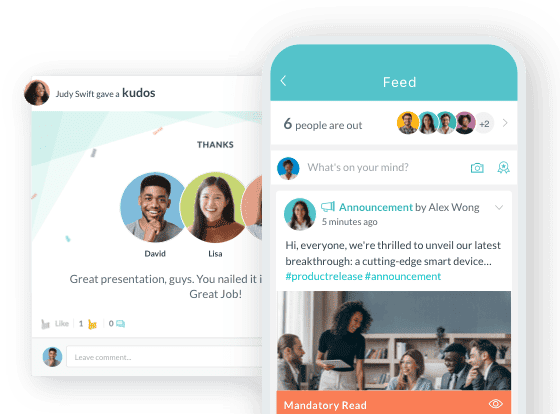Perfect Onboarding App for Nurses: Get New Caregivers Shift-Ready Faster
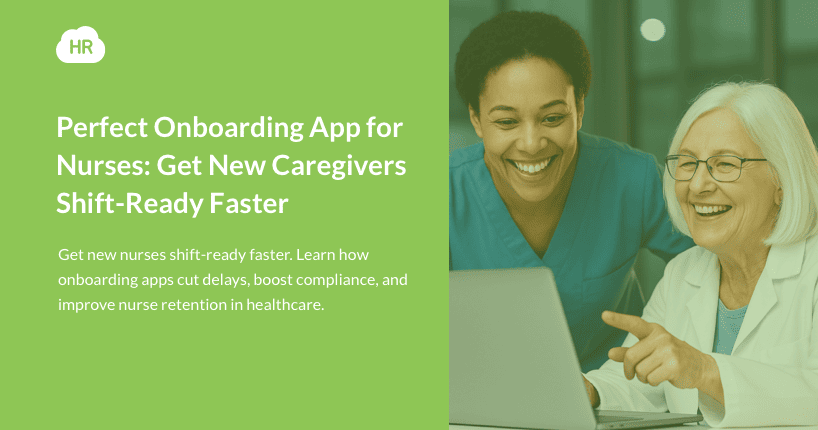
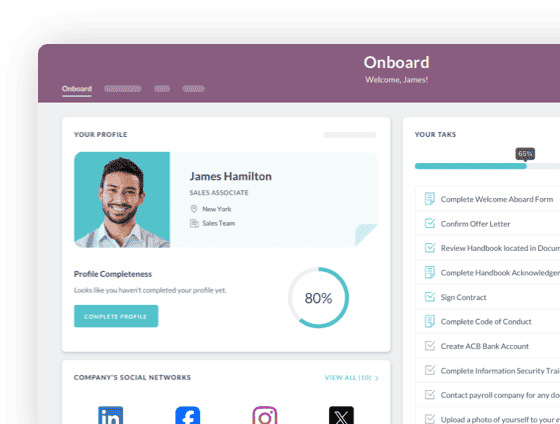
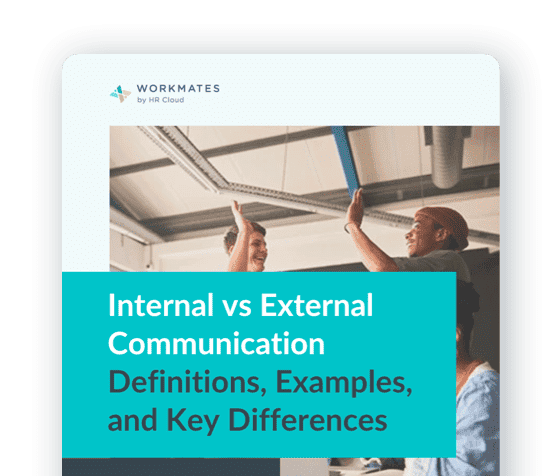
 Cut onboarding time
by 60%—here's the
Ultimate Checklist
that helped do it.
Cut onboarding time
by 60%—here's the
Ultimate Checklist
that helped do it.
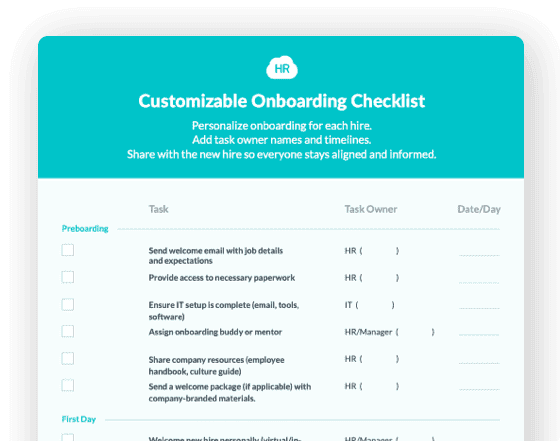
A meta analysis at the beginning of 2025 found nurse turnover rate to be 15-18% globally. Which means healthcare organization are always hiring fast to fill shifts, bringing new nurses on within weeks. Initially it can feel like relief but if the new hires are not onboarded right, you are bound to observe this pattern — missed shifts, frequent leave, and confused expectations.
According to an NIH study, ineffective and inefficient onboarding can lead to poor job satisfaction among new nurses, finally resulting in attrition. The study emphasizes that effective onboarding is the key to new nurse success.
Caregiving depends on relationships, continuity, and predictable staffing to keep patients safe and families reassured. When new hires miss shifts, they notice and trust erodes. That trust loss raises costs in multiple ways — overtime, low team morale dips, and patient turnover.
This post lays out practical steps (think role templates, timely nudges, and secure document checks) and a checklist to get new caregivers shift-ready faster.
Let's begin.
Must Have Core Capabilities For Onboarding App for Nurses
Paper forms, email instructions, and siloed checklists with scattered tasks across systems means bedside staff seldom see them. Managers scramble to verify licenses and training before each shift. You chase documents while the roster frays, and new hires burn out or quit. This is a systems failure, not a personnel flaw. Fixing it means redesigning processes, not piling tasks on people.
You need clarity, not more chaos when it comes to nurse onboarding programs. The system you choose must map real nursing environment. It should push tasks to the devices nurses actually use and remove guesswork for managers.
At the very minimum, the onboarding app should have these capabilities:
- Mobile-first forms with e-signature so hires complete paperwork on a break.
- SMS and push notifications that nudge task completion without extra calls.
- Secure document capture that accepts photo IDs, licenses, and certificates.
- Conditional logic and role templates that show only what matters for each nurse.
- Offline support so rural and satellite sites finish forms without connectivity.
- Automated reminders and escalation rules so managers stop firefighting last minute.
Also insist on audit trails and role-based access. That protects PHI and shows who completed what and when. Finally, the platform should simplify setup. Templates and reusable workflows save hours when you scale across units. These capabilities together fix process friction — not by magic, but by design.
Stages of Nurse Onboarding to Keep in Mind
Onboarding is very different from a one-day orientation. It unfolds in stages, each designed to help nurses move from paperwork to patient care to becoming an integral part of the care team with clarity and confidence.
Pre-boarding: Nurses typically need to provide licensing, immunization records, and role-specific certifications in the pre-boarding stage. Getting these out of the way before day one avoids last-minute delays and lets new hires show up ready to start. It also signals professionalism. When a nurse logs in and sees a portal with clear instructions and upload options, they know the organization values their time.
-
First 30 days: This is where new nurses learn the culture and daily flow. Shadow shifts, buddy assignments, and access to patient safety protocols are critical. Without this structure, new hires often feel overwhelmed or unsupported. When the first month is clear and structured, they build confidence, reduce errors, and form stronger bonds with colleagues.
-
31 - 60 days: By this point, nurses should be demonstrating core competencies: patient handoffs, charting accuracy, infection control. This is the moment for managers to validate skills through checklists and training sign-offs. When new hires see their progress tracked and acknowledged, they are more likely to commit and stay beyond the probationary period.
-
61 - 90 days: At three months, the focus should shift to long-term fit. Nurses need clarity on long-term scheduling, career growth paths, and performance expectations now. Structured 90-day reviews prevent surprises, while recognition at this stage boosts morale. The 90-day mark is when many nurses decide whether to stay or go. A predictable check-in lowers turnover risk and strengthens trust.
-
Nurse onboarding is like a step ladder. Each stage builds on the last, and the right app should make these checkpoints visible and predictable. That’s how you turn compliance tasks into a clear journey from new hire to confident caregiver.
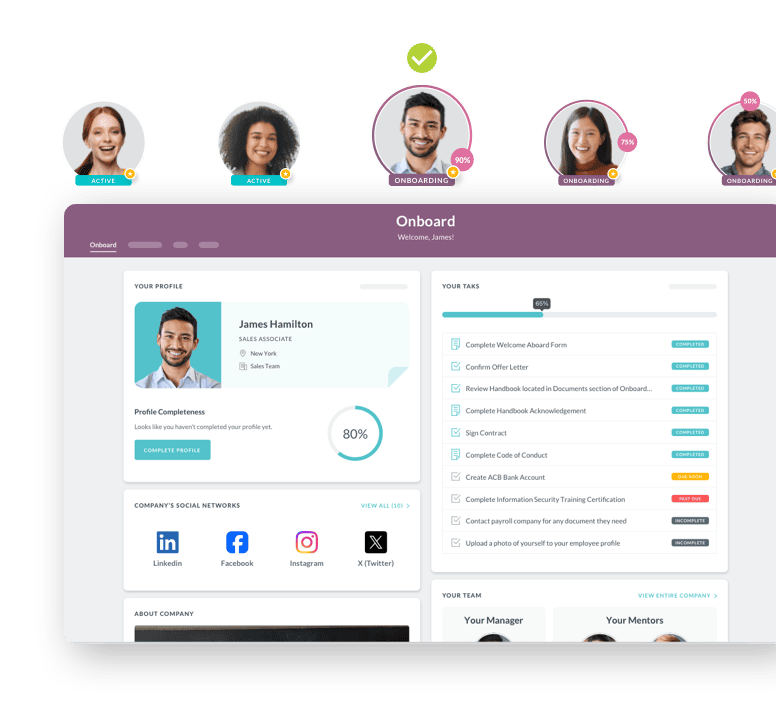
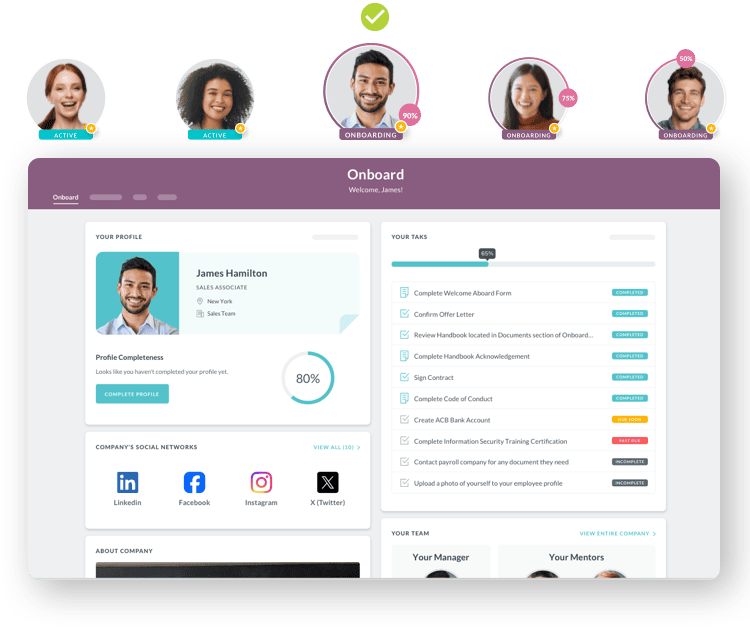
How HR Cloud Solves Each Need: Feature Map
HR Cloud matches onboarding problems to features you need to retain new nurses.
It deploys a branded candidate portal so nurses see only relevant tasks and forms. All About Kids moved documents and e-signatures earlier in the onboarding process, improving completion and compliance drastically.
Automated nudges cut manual chasing. The platform sends SMS and push reminders and escalates overdue tasks to managers. Behavioral Progression saw a 60% drop in new-hire questions after enabling automated prompts.
Document capture and verification speed credential checks. HR Cloud supports photo uploads, OCR, and secure storage so managers stop re-keying paperwork.
Role templates and conditional workflows reduce noise. You create one template per nurse role and reuse it across units. That cut onboarding time at Behavioral Progression by roughly half.
Manager dashboards show shift-readiness at a glance. You see who completed training, who still needs documents, and where bottlenecks sit. Osmose reported 24% improvement in data accuracy within three months of rollout.
Finally, reusable workflows and strong implementation support make scaling practical. All About Kids credited hands-on account management for meeting complex compliance needs.
Tip: HIPAA compliance is critical in healthcare. Ask us about HIPAA controls and our standard BAA.
Implementation roadmap (step-by-step)
Having the right app is not sufficient. You need to use it right. Here is a pilot implementation you can try yourself:
- Choose three high-volume nurse roles for the pilot:
Pick roles from different units or care settings. This keeps scope tight. - Build reusable role templates and mobile-ready forms:
Include expectations, required trainings, and credential checkpoints. - Configure credential verification points in each template:
Add license checks, mandatory trainings, and clear pass/fail gates. - Enable SMS invites and secure push notifications for the pilot cohort:
Turn on photo upload and OCR for quick document capture. - Provide a desktop alternative for non-mobile hires:
Ensure every hire can complete steps, regardless of device. 
- Run a two-week pilot with one unit:
Track these KPIs: time-to-ready, mobile completion rate, and PHI access audit exceptions. - Collect weekly feedback from managers and new hires:
Tweak flows based on practical issues and user comments. - Iterate, then scale in controlled phases:
Keep KPIs visible to leaders during expansion. - Download this pilot checklist for mobile onboarding of nurses and display it in a prominent area for easy reference.
Quick wins (fast actions you can enable today)
You don’t need to wait two weeks to see the difference HR Cloud can make to your nurse onboarding program. Here are some quick wins you can start experiencing today:
- Turn on SMS invites and secure document upload.
- Convert two high-use forms to mobile-ready versions.
- Enable automated nudges for overdue tasks and escalations.
- Offer a desktop alternative for non-mobile hires.
- Turn on OCR for photo uploads to speed verification.
These moves are low-effort and show quick results. Managers stop chasing paperwork. You have free time for staffing and patient handoffs.
KPIs to track (keep this tight)
What gets measured gets done. But do not try to track too many metrics simultaneously. Here are four metrics critical for measuring onboarding success.
- Time-to-ready — days from hire to first shift.
- Mobile completion rate — percent finished on phone within 72 hours.
- Overtime hours per open shift — watches hidden cost of last-minute coverage.
- New-hire 90-day retention — shows onboarding quality and fit.
Display these on a simple dashboard. Share results weekly with managers. That keeps momentum and accountability.
Make New Nurses Ready, Not Just Hired
You can stop firefighting paperwork and start building trust from Day 1, or even pre-onboarding phase. Small process changes deliver fast wins. Role templates, clear checkpoints, and predictable nudges cut friction. Secure document capture and audit trails protect patients and your team. Pilots at peers show significant gains in days-to-ready and fewer credential bottlenecks.
Focus on the process first. Add technology where it removes steps. Measure tightly. Show leaders the numbers weekly. That’s how you turn a chronically stressed roster into a reliable one. Ready for the next step? Request a demo and bring leaders the data.
 Discover how our HR solutions streamline onboarding, boost employee engagement, and simplify HR management
Discover how our HR solutions streamline onboarding, boost employee engagement, and simplify HR management
FAQs
What is a nurse onboarding app?
A nurse onboarding app is a digital platform that automates hiring tasks such as license verification, training checklists, and paperwork completion. It gives managers visibility into progress, ensures compliance, and helps new nurses get shift-ready faster. Mobile-first design and reminders reduce delays and improve retention.
Why is structured onboarding important for nurses?
Structured onboarding gives nurses clarity and confidence from day one. It reduces missed shifts, errors, and early turnover by guiding new hires through pre-boarding, training, and 30-60-90 day checkpoints. A clear process also improves patient safety and team morale, making onboarding a critical factor in long-term retention.
How does a nurse onboarding app improve retention?
An onboarding app improves retention by reducing confusion, errors, and burnout during the first 90 days. Nurses know exactly what is expected, managers track compliance, and early wins are visible. When onboarding feels seamless, new hires are more likely to commit, lowering costly turnover and overtime expenses.
What features should a nurse onboarding app have?
The best apps include mobile-ready forms, e-signatures, secure document upload, automated reminders, and role-specific templates. Conditional workflows, offline support for rural sites, and manager dashboards further streamline the process. These features help ensure every nurse completes the right steps and is ready for patient care quickly.
How do onboarding apps help with compliance in healthcare?
Healthcare compliance requires constant checks on licenses, certifications, and training. Onboarding apps automate document capture, validation, and audit trails. This reduces the risk of expired credentials slipping through and ensures all records meet HIPAA and Joint Commission standards. Managers spend less time chasing paperwork and more on patient safety.
Can onboarding apps reduce nurse turnover?
Yes. Studies show ineffective onboarding directly drives nurse attrition. Apps reduce turnover by standardizing the processes, providing reminders, and giving managers visibility into readiness. Structured 30-60-90 day milestones keep engagement high, ensuring new hires feel supported, capable, and connected, which are key to retaining caregivers.
How quickly can a nurse be shift-ready with the right app?
With the right onboarding app, many hospitals cut time-to-ready by days or even weeks. Mobile forms, automated nudges, and reusable templates mean credentials and training are verified faster. Instead of delays, new hires move smoothly from acceptance to first shift, reducing coverage gaps and reliance on costly overtime.

Keep Reading
From Manual to Automated: A Complete Guide to Digitizing Employee Onboarding for Large Organizations
Sarah Chen, Director of HR at a 7,000-employee healthcare organization, starts her Monday
Enterprise HR Software in 2025: Why Traditional Enterprise Platforms Fall Short and What Actually Works
Traditional enterprise human resources software systems promise comprehensive solutions
AI in Onboarding: Complete Guide for 2026
You’ve probably been hearing this multiple times a day — AI is transforming HR. But
Like What You Hear?
We'd love to chat with you more about how HR Cloud® can support your business's HR needs. Book Your Free Demo

Build a Culture of Recognition. Boost Engagement. Guaranteed.
Workmates empowers employees to stay informed, connected, and appreciated—whether they’re on the front line, in the office, or remote. Recognition drives 12x higher engagement.Trusted by industry leaders in every sector




Cut Onboarding Costs by 60%.
Take the confusion and follow-ups out of onboarding with automated workflows, digital forms, and structured portals—so new hires ramp faster 3X quicker.Trusted by industry leaders in every sector




